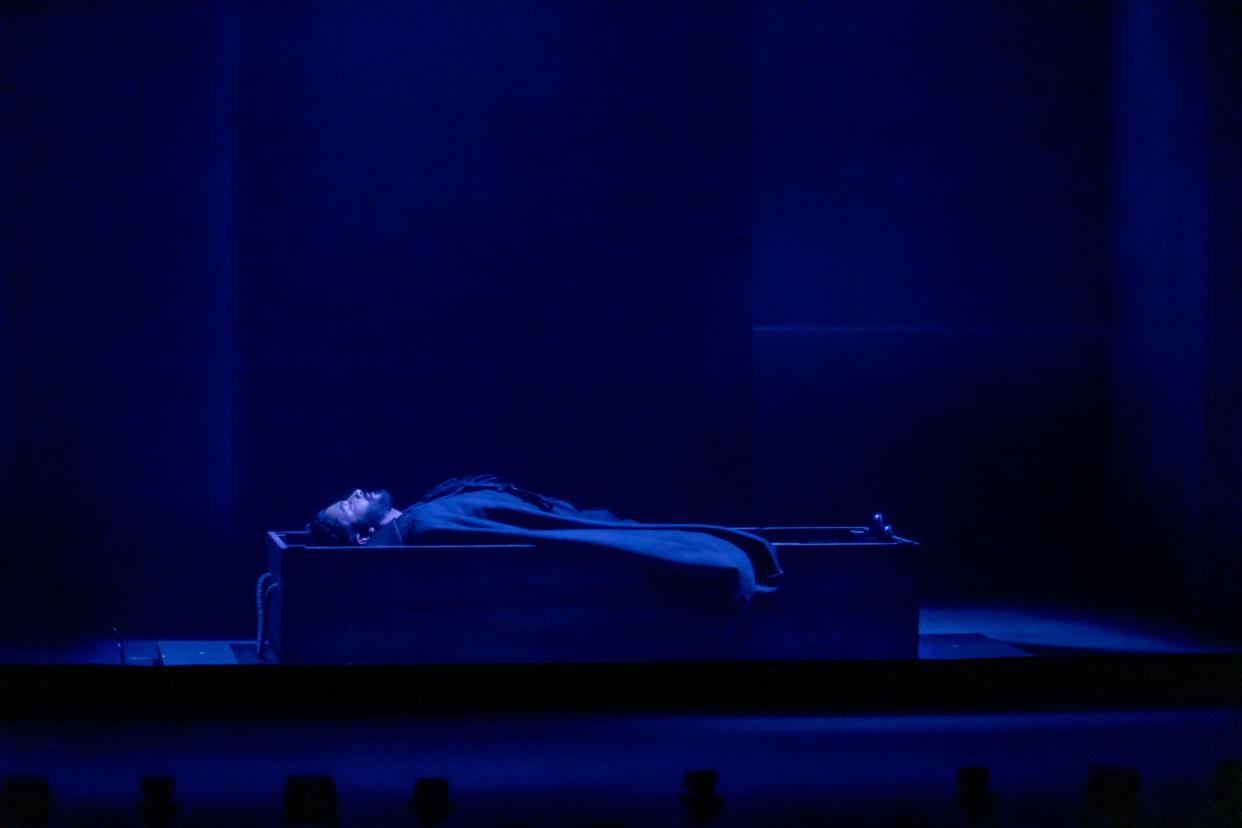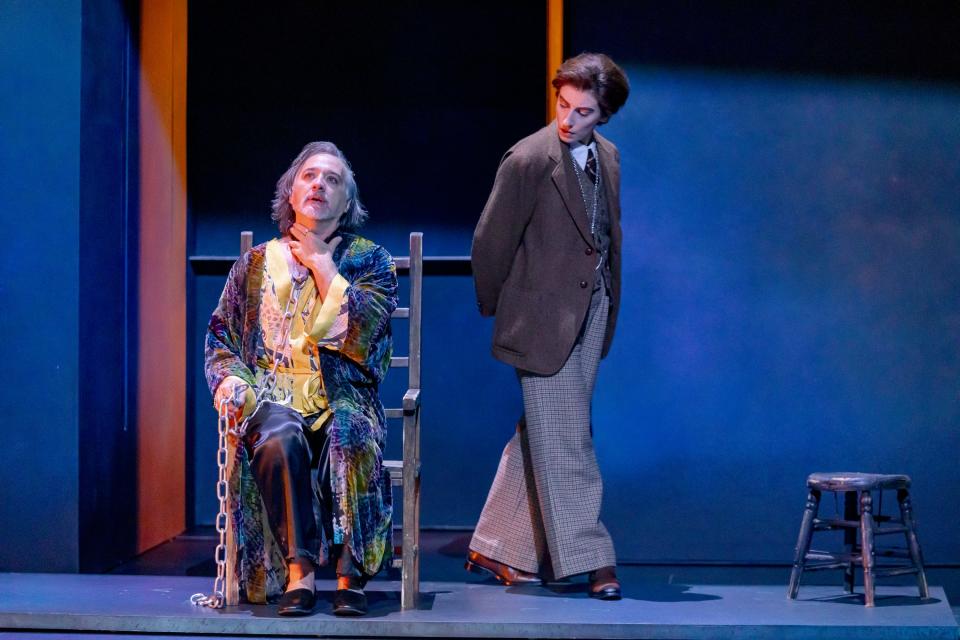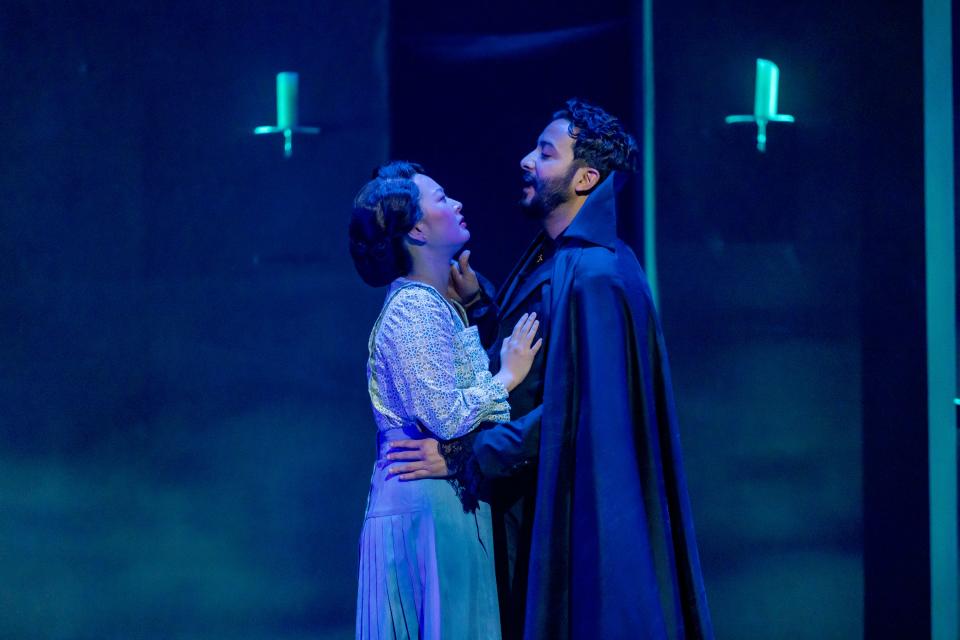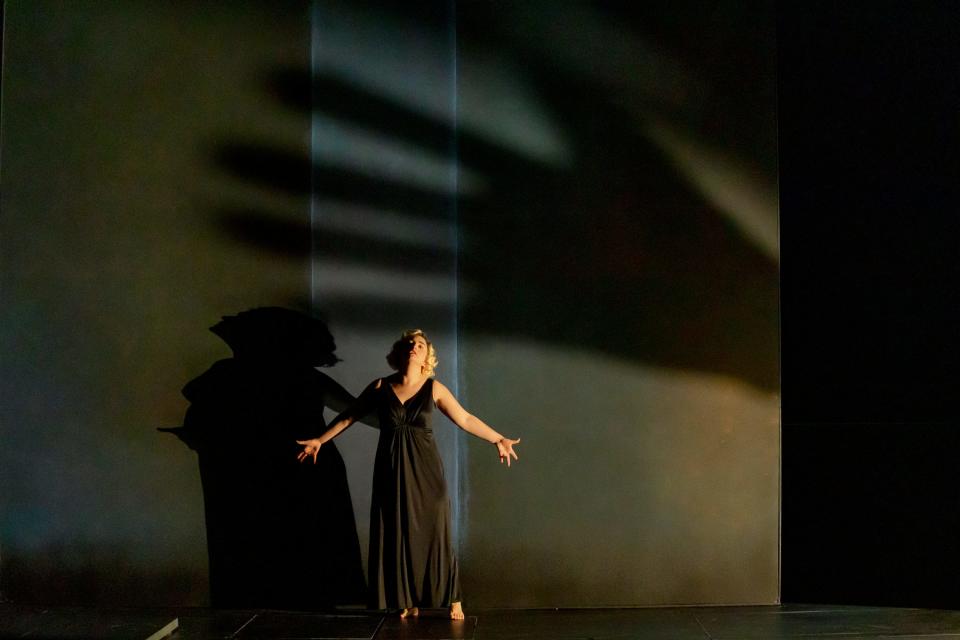Review: 'Dracula' grows new teeth at the Playhouse (and don't be afraid to laugh)

Laughter isn’t something you expect when you see a stage version of “Dracula.” After all, Bram Stoker’s 1897 novel was a dark tale, filled with blood and death – and un-death – and the occasional stake through the heart. But there wasn’t much to giggle about.
But this isn’t Bram Stoker’s “Dracula.” Rather, it is Vanessa Severo’s adaptation of the novel, written in collaboration with and co-directed by Joanie Schultz, the Playhouse in the Park’s associate artistic director.
So the production that opened last week at the Playhouse is its own creature – a curious, probing and occasionally menacing vision of the original story.
A quick aside. As I was leaving the theater, a woman walking nearby asked the people with her, “Is that how the story is supposed to end?” A couple of her friends answered "Yes.” Three others said – with just as much certainty – “No.”

In a sense, they were all correct. There have been so many adaptations of the novel that each of us is likely to enter the theater with our own set of expectations about what the story should be. We’ve seen “Dracula” on TV and in movies. We’ve seen the story played for horror, for mystery and for slapstick. (Remember, Abbott and Costello and Mel Brooks all dabbled in Draculism.) There was even a highly profitable blaxploitation version – “Blacula.”
Severo and Schultz’s version doesn’t fit cleanly into any of those categories. But it tiptoes briefly into several of them. So while it is a serious exploration of darker realms of passion, it is not averse to accommodating laughter. There is blood-letting, of course. But it takes place offstage and is represented by the stage being bathed in red by Pablo Santiago’s lighting. Same with the violence inherent in a vampire tale. We see very little of it. Severo and Schultz aren’t trying to disgust us. They want something more potent. They want the fear to live in our minds, not our memories.
So the cast isn’t playing for laughs. There’s no comic shtick here. The actors are fully enmeshed in a murky realm where death may be just around the corner. Occasionally, the absurdity of it all sneaks through and we are treated to a laugh or two. It’s a great balance.

One of the most intriguing aspects of this “Dracula” is the strength of the female characters. Male characters set things into motion, especially Julian Remulla (Dr. Seward), Adam Poss (Dracula) and Harmon dot aut as a deliciously creepy Renfield.
But it is the women who occupy the dramatic high ground in this “Dracula,” beginning with Mia Hutchinson-Shaw as Lucy Westenra, who spends the bulk of her onstage time writhing and screaming and caterwauling as she experiences the symptoms of her vampirism. Mi Kang plays her friend Mina, who unexpectedly proves to be the most wily of the characters.
The playwrights take their greatest and most effective liberty with the character of Van Helsing, a physician who is called in to solve Lucy’s “problem.” Stoker wrote the character as a man. But Severo and Schultz recast Van Helsing as a woman, played by Rin Allen. Since Europe’s 19th-century medical community would never afford a woman the same respect it would a man, Van Helsing is forced to disguise her gender. In the script, it is a relatively simple twist. But it is one that opens up some of the play’s most impactful encounters.

This “Dracula” won’t meet everyone’s expectations of what a vampire tale should be. But it is a wonderfully compelling story, wreathed in Yu Shibagaki’s towering cave of a set and accompanied by the subtle dread suggested by Thomas Dixon’s ever-present soundscape. Add to that the startling effects delivered by magic/illusion designer Nate Dendy and you have all the makings of a tale likely to occupy a small place in your imagination for some time to come.
'Dracula'
When: Now through March 3.
Where: Moe and Jack’s Place – The Rouse Theatre, Playhouse in the Park, 962 Mount Adams Circle, Eden Park.
Tickets: $33.50-$96.
Information: 513-421-3888; www.cincyplay.com.
This article originally appeared on Cincinnati Enquirer: Review: 'Dracula' gets new teeth at Cincinnati Playhouse in the Park

